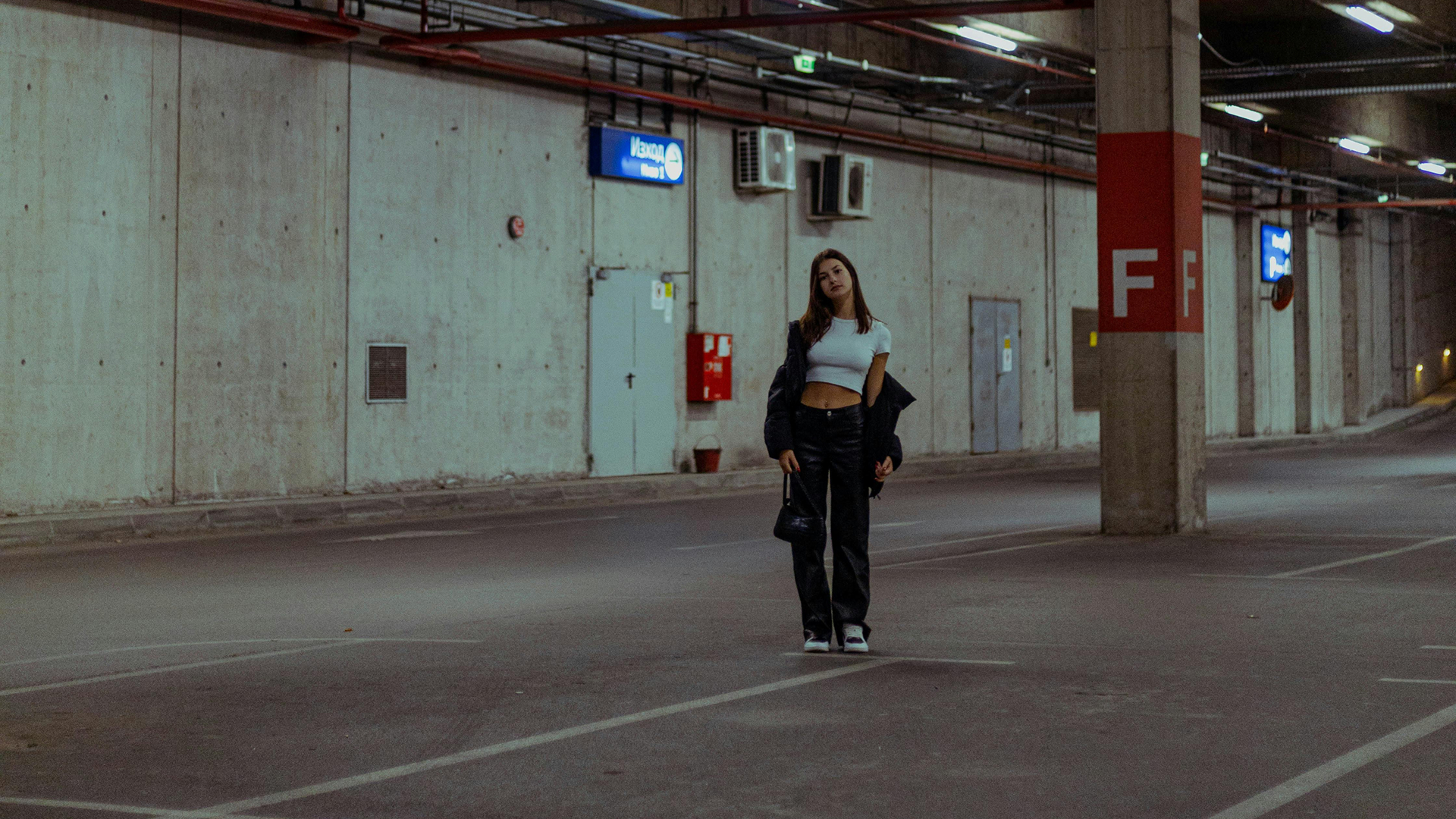
A new column about spaces public, private, and everything in between. In this first installment, Anna Fitzpatrick writes about the spatial dimensions of loneliness.
May is Mental Health Awareness Month, a calendar observance first set in 1949 by the American community non-profit now known as Mental Health America. In its original form, the organization was called the National Association for Mental Health and was founded in 1909 by a man named Clifford Whittingham Beers—according to their website, it was his attempt to reform a broken system that he personally saw was full of institutionalized abuses against people in need of compassionate care.
Today MHA encourages people to spend May paying close attention to the way their own mental health, as well as the ways their environment and their communities contribute to and benefit from careful, sensitive, and inclusive care. This is a worthy aim, and within it comes questions that require their own attention: how do we define a term like mental health? What are the individual responsibilities to take care of ourselves, and how can that be possible in a world with so many systems that prevent us from living with safety, autonomy, and joy? What does it mean to locate mental health within a diagnostic or institutional framework, and how can that medical approach reckon with its own history of harming so many people with narrow-minded or oppressive definitions of “mental health” as a synonym for traditional or repressive values?
In her new column, Anna Fitzpatrick will be looking at the way our environment becomes a part of who we are, and vice versa. The first installment below is about distance of all kinds. Loneliness can be an emotion, but it’s also a spatial experience. Here, she explores what recent events and entrenched infrastructure has done to our ability to connect.
During the loneliest days of the pandemic, when I needed comfort, I watched the familiar, formulaic shows that I had grown up with. Friends, it should be said, does not exactly hold up, though I can find it funny enough when I feel enough despair about the world and have smoked enough weed, which was, to be clear, most nights of lockdown. The premise of “platonic adult friends living in close proximity” was the premise of many beloved sitcoms from the last four decades, used with varying degrees of comedic success in The Golden Girls, Seinfeld, Living Single, Happy Endings, New Girl, Big Bang Theory, How I Met Your Mother, and many more lost to the annals of syndicated network history.
I’m a sucker for any setup in which characters with different aesthetic signifiers (Phoebe wears turquoise and Chandler wears sweater vests!) manage to love one another with or without the presence of sex. If one could ignore the racial homogeneity, the approximately 47 homophobic jokes per episode, and the final seasons in which everybody finds meaning through dream jobs, monogamous relationships, marriage, and parenthood, Friends could almost be read as a quietly radical utopia: relationships are defined on their own terms outside of legal frameworks, found families abound, and characters’ jobs or material realities never get in the way of their right to pursue hours of leisure with the people they love. I’d almost be willing to call it downright queer if I didn’t know better, or if I wasn’t worried about that being the pullquote people use on social media.
Like so many things that consume the bulk of my thoughts, I thought of this moment again because of a tweet. On March 9 2023, almost exactly three years since the World Health Organization declared COVID-19-19 a pandemic, the BBC News Twitter account shared a link to a story with the headline, “Mental-health crisis from pandemic was minimal, study suggests.” The linked article had a bit more nuance to it, explaining that the review did not look at lower-income countries, or focus on children, young people and those with existing problems. Still, the clickbait headline did what clickbait headlines on social media often do, and people had a field day riffing in response. They shared the art museum they made for their hamster, or the birthday party they had for their dishwasher. The examples shared were creative, silly, and absurd, which was precisely the point: even those who made their way through the early pandemic without suffering the worst of it (i.e. those who lost income or housing, or suffered from the loss of their own health or the health and life of their loved ones) were forced to create their own coping mechanisms using whatever limited resources were available in their newer, smaller, socially distant worlds.
The study did acknowledge that younger people were disproportionately impacted by the pandemic, with the NHS reporting that one in four 17-19year-olds probably had a mental health disorder in 2022, and that “those most affected by the pandemic were people who struggled with their mental health before COVID-19.”
Perhaps some studies downplayed the mental-health impacts of COVID-19 because the mental health crisis predated COVID-19. Likewise, the pandemic didn’t cause income inequality or Love is Blind so much as it revealed it to people who might not have otherwise been paying attention.
The article, in a classic BBC move, focuses on people in England, but a recent advisory from the U.S. Surgeon General Vivek Murthy titled “Our Epidemic of Loneliness and Isolation” argues that this phenomenon is not U.K-exclusive. “In recent years, about one-in-two adults in America reported experiencing loneliness,” writes Dr. Murthy in the report’s introduction. “And that was before the COVID-19 pandemic cut off so many of us from friends, loved ones, and support systems.” Loneliness, he goes on to say, is more than just the subject of a hit 2004 song by singer-songwriter Akon (I’m paraphrasing here), but it can have real physical health effects. It’s associated with greater risks of cardiovascular health, dementia, stroke, depression, anxiety, and premature death, with the impact of being socially disconnected being similar to that caused by smoking up to fifteen cigarettes a day.
In an especially cruel irony, researchers found that lower levels of social capital (here defined as “the resources to which individuals and groups have access through their social connections”) were associated with higher cases and deaths from COVID-19. Social distancing might help flatten the curve, but social isolation made the cases so much worse.
The reasons why we as a people are becoming lonelier are manifold, and the detailed report lays some of them out on how they affect individuals, relationships, communities, and societies. There are our phones, of course, which can enable connections through ease of communication and networking tools like dating apps (ever heard of them?), but can also divert our attention when it comes to meaningful IRL hangs, or invite in insecurities via seeing the seemingly blessed lives of others on social media, a phenomenon the greatest medical minds of our generations refer to as FOMO.
There are our jobs, which occupy so much of our waking hours during the best of times, a problem that is exacerbated by lower income folks who are forced to work a multitude of gigs to keep up with the exponentially rising cost of living, while benefits such as maternity leave are being slashed and family time becomes an afterthought to earning enough capital to survive.
Then there are the ways our cities are built, which I found personally vindicating, because while others were building art galleries for their hamsters and I had exhausted the back-catalog of familiar sitcoms, I was spending the early part of the pandemic obsessively tracking how much urban environments dedicate to surface parking lots, a rabbit hole I went down after watching an 85-second Youtube video on a whim and becoming radicalized like a teenage boy watching a Twitch streamer for fifteen minutes (I’m kidding, sorta, though the way that online spaces incentivize feedback loops based on our political ideologies also unsurprisingly leads to isolation). The disappearance of public spaces in cities and the increasing reliance on car-dependent sprawl (not to mention decades of disinvestment and the outright destruction of predominantly Black, immigrant, and working-class neighborhoods) have a direct impact on the communities we are able to build, and I’m not just saying that to validate my own newfound compulsive interest in the subject.
For this series, I’ll be examining the different ways that spaces and places shape our relationships, or lack thereof. I’ll be looking specifically at urban environments because that’s where my pandemic obsessions have taken me, but it will naturally overlap with other areas. Privatization of formerly public spaces and the housing crisis have pushed us further apart, literally, so that hanging out with friends has to become a scheduled affair. We’ve turned to digital spaces, and while social media can function as a wonderful tool for connection, it incentivizes discord and dehumanization as our outrage fuels clicks and clicks feed advertisers. Less time to create means more time to consume, and streaming platforms have ensured that we have access to a neverending churn of content, even as they refuse to adequately compensate the people who make it. We are spread out and spread thin—mentally, physically and spiritually. What is the point of working for a living if it leaves us no time to actually live? Does the car really offer freedom if it leaves us all stuck in traffic? How much do our individual successes actually benefit us when it leaves our loved ones sicker, sadder, and more alone? Humans weren’t built for this; why should our cities be?
Fixing our epidemic of loneliness will take collective change on a structural level, and it will be hardest for those who are the most institutionally marginalized. But we can start by recognizing that there is a problem, and by questioning what our priorities are, and likewise, what our obligations are to each other.
Related Articles

There’s laughing at the sex party
In culture, kink clubs are a somber business. In practice, people trade barbs between whippings. Kawai Shen takes us beyond the BDSM aesthetics and shows us why laughter is an erotic release.

